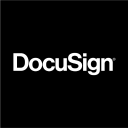Electronic signatures are broadly accepted throughout the industrialised world as equivalent to a written “wet” signature. For most use cases, customers, and locations, an electronic signature is sufficient. However, regulated industries, governmental entities or specific European use cases may require or prefer digital certificate-based signatures, which offer a heightened level of identity verification and assurance compared to electronic signatures.
In Europe, the Electronic Identification, Authentication and Trust Services (eIDAS) regulation defines the technical standard for electronic signature in three levels: electronic signature and two digital signature levels called advanced electronic signature (AES) and qualified electronic signature (QES) DocuSign offers eIDAS compliant electronic signatures at all levels so you can meet the toughest requirements for each of your use cases wherever your business operates.
Watch this 45-minute on-demand webinar:
Find out about the legality of EU signature transactions and what is required to comply with EU regulations (eIDAS)
Learn about the different types of signature types (Standard, AES and amp; QES) and where they are legally required
See live demos for each signature level






























































